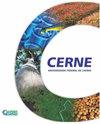An innovative approach on the renewable hybrid barrier: combined use of wood and sand
IF 0.7
4区 农林科学
Q3 FORESTRY
引用次数: 4
Abstract
Background: Wooden materials have been among the basic materials used in many different areas due to some advantages throughout the history. Roadside barriers, which are called passive safety structures, can be produced with different materials such as wood, steel, concrete, and plastic. In this study, Renewable Hybrid Barriers (RHB), a new type of barrier that is used wood in terms of aesthetics, renewability, high shock resistance, and used sand in terms of impact absorption capacity and low cost, produced by taking into account some of the disadvantages of other barrier types. These barriers are planned to be used especially in historical/touristic areas, scenic roads, and in urban areas as urban furniture. Real-time crash tests in accordance with EN 1317 (Road Restraint Systems) standard require high cost and long time. Therefore, the pendulum crash test mechanism frequently used in the literature was manufactured at which the experiments were carried out. Results: The results revealed that the RHBs which has 2 cm thick timber and sand used together, were sufficient and suitable in terms of both cost and necessary safety criteria. It was observed that impregnation and heat treatment applications did not have a considerable negative effect on the performance of RHBs which provide an opportunity to use RHBs for outdoor conditions.. Conclusion: In the light of the results of the study, the optimum wood timber thickness was determined as 2 cm regarding TB 31 test criteria. It is proposed that the crash tests for different wood species, timber thickness, and/or barrier dimensions should carry out in future studies. This study can serve as the basis for the next step, real-time real crash tests. Since the study includes an interdisciplinary subject, it is thought that it will inspire different studies.可再生混合屏障的创新方法:木材和沙子的结合使用
背景:在历史上,由于一些优势,木制材料一直是许多不同领域使用的基本材料之一。路边护栏被称为被动安全结构,可以用木材、钢铁、混凝土、塑料等不同的材料制作。在本研究中,可再生混合屏障(RHB)是一种新型屏障,在美观、可再生、高抗震性方面使用木材,在冲击吸收能力和低成本方面使用沙子,通过考虑其他屏障类型的一些缺点而生产的。这些屏障计划特别用于历史/旅游区,风景优美的道路,以及城市地区的城市家具。符合EN 1317(道路约束系统)标准的实时碰撞测试需要高成本和长时间。因此,制造了文献中经常使用的摆锤碰撞试验机构,并在其上进行实验。结果:结果表明,在成本和必要的安全标准方面,2 cm厚的木材和沙子一起使用的rhb是足够和合适的。据观察,浸渍和热处理应用对rhb的性能没有相当大的负面影响,这为rhb在室外条件下使用提供了机会。结论:根据研究结果,根据TB 31测试标准确定最佳木材厚度为2 cm。建议在未来的研究中进行不同木材种类、木材厚度和/或屏障尺寸的碰撞试验。本研究可为下一步的实时真实碰撞试验奠定基础。由于该研究是一个跨学科的课题,人们认为它将激发不同的研究。
本文章由计算机程序翻译,如有差异,请以英文原文为准。
求助全文
约1分钟内获得全文
求助全文
来源期刊

Cerne
农林科学-林学
CiteScore
1.60
自引率
0.00%
发文量
2
审稿时长
6-12 weeks
期刊介绍:
Cerne is a journal edited by the Federal University of Lavras, Minas Gerais state, Brazil, which quarterly publishes original articles that represent relevant contribution to Forestry Science development (Forest ecology, Forest Management, Silviculture, Technology of Forest Products).
 求助内容:
求助内容: 应助结果提醒方式:
应助结果提醒方式:


